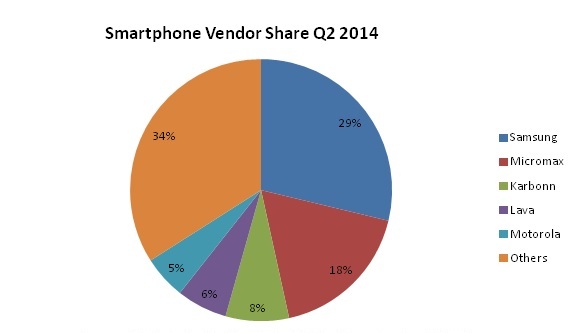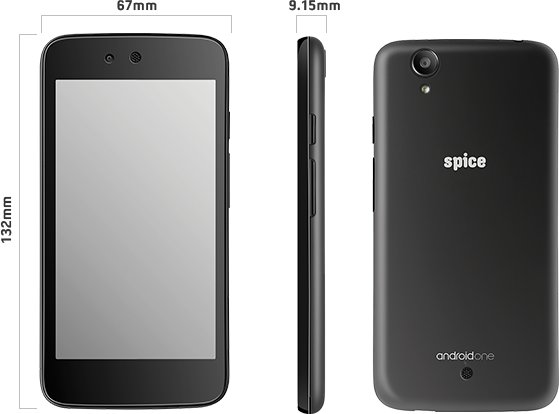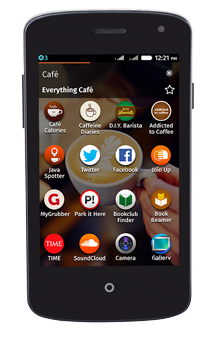
India has suddenly become the hot ticket in the race to expand smartphones beyond saturated markets in the North America, Europe, and Asia Pacific. Following the late August introduction of Firefox OS phones from Intex and Spice selling for an unprecedented $35, Google announced the launch of its Nexus-like Android One smartphone program in India. This week, Jolla began selling its Sailfish OS based phone in India, and Samsung revealed plans for a November release of a Tizen phone in the country.
For the last few years, smartphone execs have been uniformly promoting the importance of China. Their wish has come true, as Chinese smartphone sales have surged, although for the most part the Chinese have been buying Android phones from homegrown companies like ZTE and Huawei. China is not yet saturated, but it’s increasingly difficult to compete there.

Smartphone vendors are now spreading out to the far corners of the Earth searching for potential new touchscreen addicts. India, with its huge population and rising middle class, is the prime target. The problem with India is the relative lack of 3G and 4G infrastructure for downloading apps or updates. A good part of the appeal of smartphones is the appeal of apps, but without the means to easily download them, many consumers are staying with cheaper Nokia feature phones.
To address this, vendors are preloading phones with numerous localized apps. In addition, Google is providing direct OTA (Over the Air) updates and app downloads for Android One customers at free or discounted rates.
Price is still the biggest differentiator in India. While there are tens of millions of potential consumers of phablets and other high-end Android phones, there are many hundreds of millions of less affluent consumers who still might be able to afford a more modest device, such as a Firefox OS phone. Google went for a mid-range approach for the first Android One phones, which sell for about $105. There are certainly cheaper Android phones in India, but also many that cost a lot more.
Some 71 percent of Indian phone sales are for feature phones, according to an August report from IDC. Samsung leads an Indian smartphone market that grew by 84 percent year-over-year in the second quarter, says the report. However, several Indian vendors are growing at a faster rate. Micromax, with 18 percent share, recently edged out Nokia (Microsoft) from the number two spot, says IDC.
 Smartphone sales should double between now and 2018, projects IDC. The sub-$200 category, which represented 81 percent of sales in Q2 2014, will grow at a faster rate than the overall market, due in part to new competition from Firefox OS and Android One, says the research firm.
Smartphone sales should double between now and 2018, projects IDC. The sub-$200 category, which represented 81 percent of sales in Q2 2014, will grow at a faster rate than the overall market, due in part to new competition from Firefox OS and Android One, says the research firm.
Most of Samsung’s volume has come from sub-$150 Android phones like the Galaxy Star Pro and Galaxy S Duo, according to the report. So far, Samsung has not signed up as an Android One partner.
Below is a quick look at the latest Indian campaigns involving Linux-based mobile platforms: Google (Android One), Mozilla (Firefox OS), Samsung (Tizen), and Jolla (Sailfish OS). The odd-man out here is Canonical’s Ubuntu Touch, which is set to debut later this year in a special version of the Meizu MX4 phone. But who knows? Maybe Meizu is aiming for India as well.
Android One
Last week, Google announced the launch of the first Android One phones in India, from Micromax, Karbonn, and Spice. Like Google’s Nexus program, Android One is a mobile reference platform with an up-to-date Android stack free of bloatware, but it’s aimed primarily at developing nations.
The Micromax Canvas A1, Karbonn Sparkle V, and Spice Dream Uno sell for an average price of about $105. They all run Android 4.4 on a 1.3GHz, quad-core Cortex-A7 processor from Mediatek called the MT6582. Specs are almost identical, with all the devices offering 1GB of RAM, 4GB of flash, and a 4.5-inch, IPS capacitive touchscreen with 854 x 480-pixel resolution. The phones feature 5- and 2-megapixel cameras, and provide dual-SIM 3G GSM, WCDMA and 2G GPRS support. Bluetooth 4.0, WiFi, GPS, and FM radio are also available.
Other Android One phones will launch in Indonesia, the Philippines, Bangladesh, Nepal, Pakistan, and Sri Lanka by the end of the year, says Google. Vendors will include Acer, Alcatel Onetouch, Asus, HTC, Intex, Lava, Lenovo, Panasonic, and Xolo.
Google’s offer of direct OTA updates, with free update downloads during the first six months, is an attempt to reverse the problem of fragmentation in the Indian Android market. This is caused in large part by the time and expense of downloading updates, as well as the many Android phones that use third-party app stores. Google has also negotiated with Airtel to let users download up to 200MB per month of apps from Google Play, free of charge. As a bonus, Android One users will be among the first to download the upcoming Android L release.
Samsung’s Tizen Phone
Earlier this summer, Samsung’s flagship Tizen phone was finally unveiled as a relatively high-end, quad-core Samsung Z phone set to ship in Russia. Yet, in July, Samsung said the Russian launch was postponed indefinitely. Earlier this week, however, the Economic Timesquoted a Samsung exec as saying a Tizen phone would reach India following the Diwali festival in late November.
It is unclear whether the India-bound Tizen phone is the Samsung Z or something more modest. Last year, Samsung tipped plans to introduce a low-end reference design for Tizen phones, but the company has not mentioned it recently.
Firefox OS
The $25 Firefox OS smartphone” promised last February by Mozilla and chipset partner Spreadtrum turned out to be about $35, but no one seems to be complaining. The Intex Cloud FX costs 1,999 Indian Rupees ($33), and the Spice Fire One Mi-FX 1 goes for $2,299 Rs ($38), which is still about half the price of the cheapest Android phones, and a third of the Android One phones.
Granted, the phones have even lower-end specs than the first wave of Firefox OS phones, running on an ARM Cortex-A5 based SC6821 chipset from Spreadtrum that also integrates a 2G baseband. Both phones have 3.5-inch, 320 x 480-pixel capacitive touchscreens, as well as WiFi, Bluetooth, FM, and dual-SIM 2G GSM radios. You get 128MB RAM, 256MB flash, and a 2-megapixel camera. Firefox OS is now available on 10 smartphones in 18 countries, says Mozilla.
Jolla’s Sailfish OS
This week, Jolla shipped its Sailfish OS-based Jolla phone in India with online retailer Snapdeal. The phone, which has been limited to Europe, and now sellsfor 349 euros (about $446), down from the original 399 euros, is going for just 16,499 Rs in India, or about $270.
Jolla also announced that it was in negotiations with several Indian phone manufacturers to license the open source Sailfish OS. The Meego Linux based Sailfish will be free to vendors, while Jolla hopes to make money on services, according to an Economic Times report. Android app compatibility could give Jolla a boost.
India Tests the OS
Winning the Indian market does not guarantee success in other emerging markets in the Middle East, Southeast Asia, Africa, and South America. India is a unique country, with special challenges — for example, the Firefox OS phones in India offer support for three or four languages. However, the lack of broadband wireless infrastructure — and consumer buying power — will likely remain realities in a number of other markets for decades. The platforms that can successfully address these issues in India should have a leg up elsewhere.




